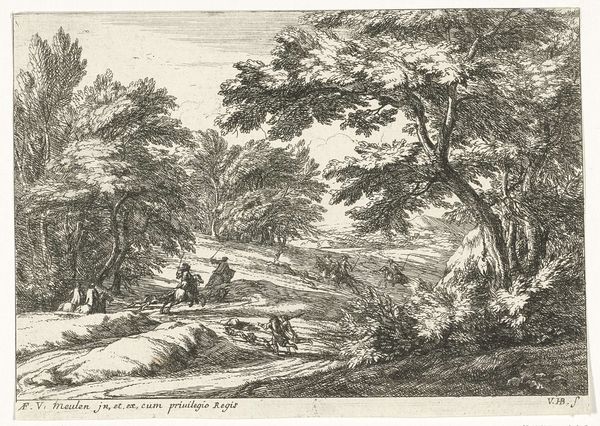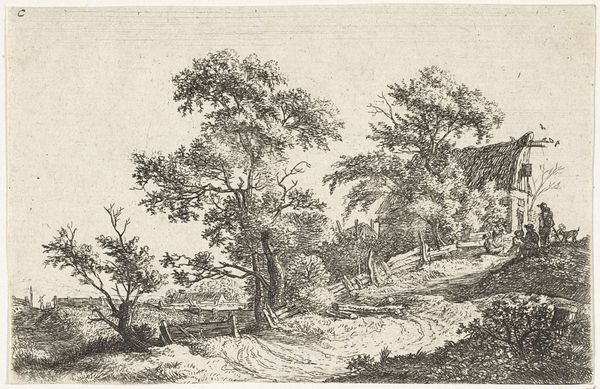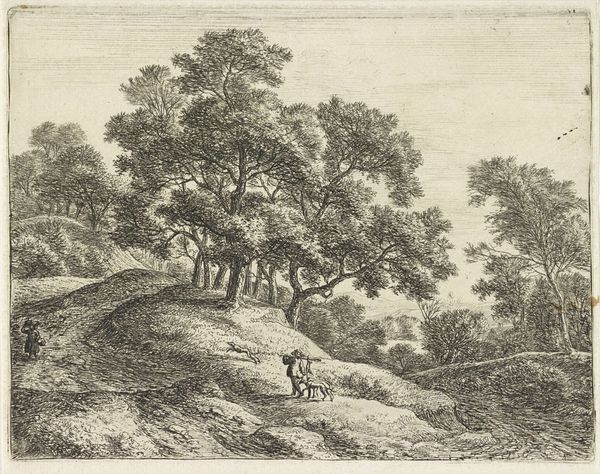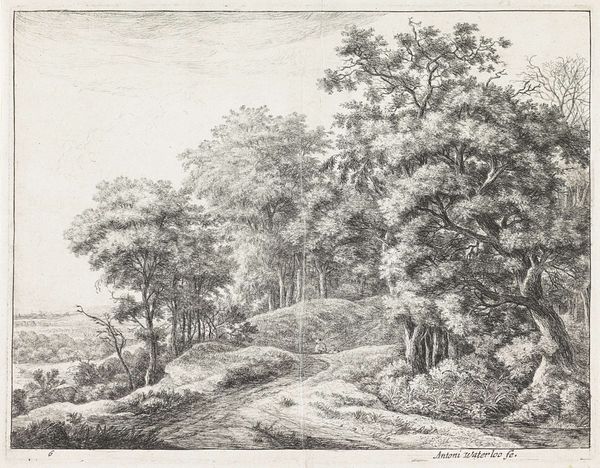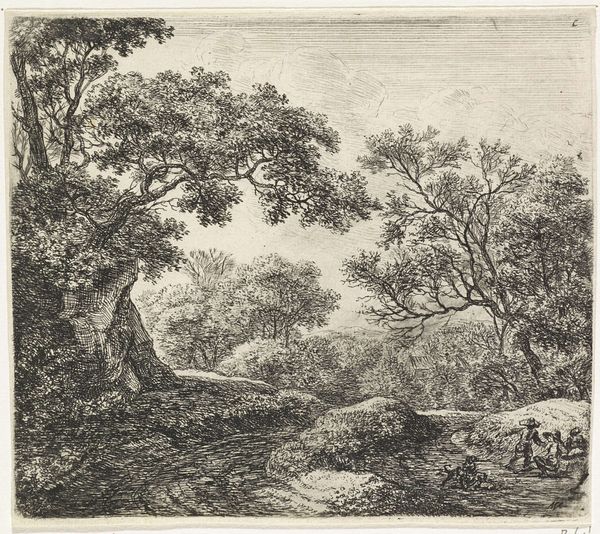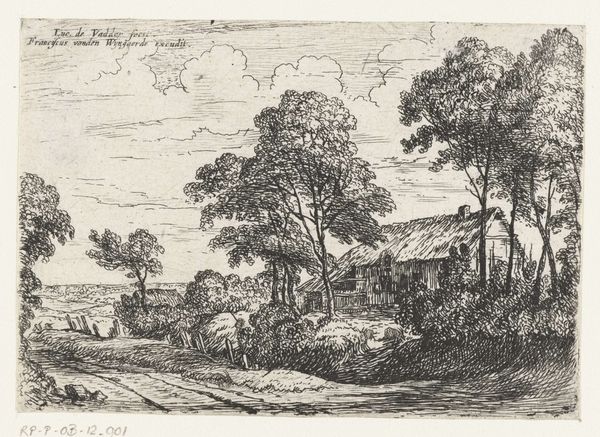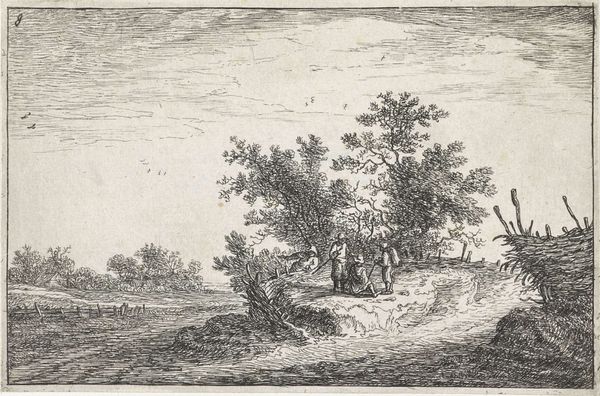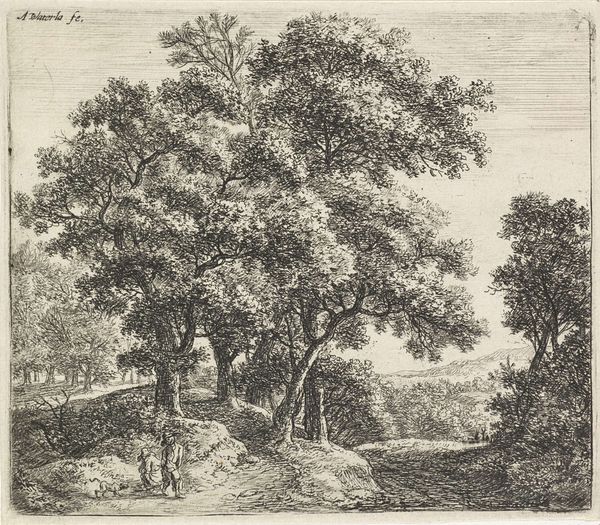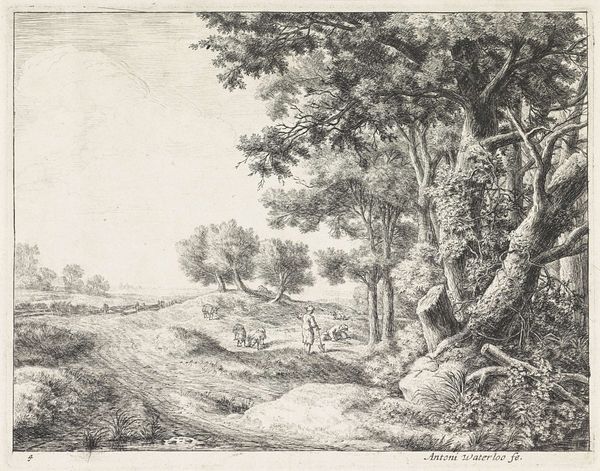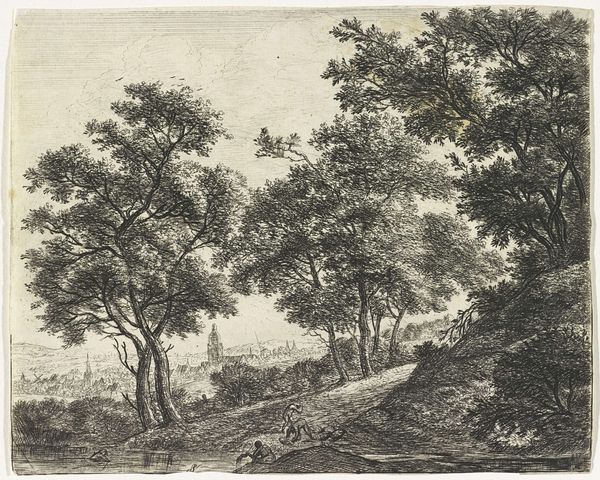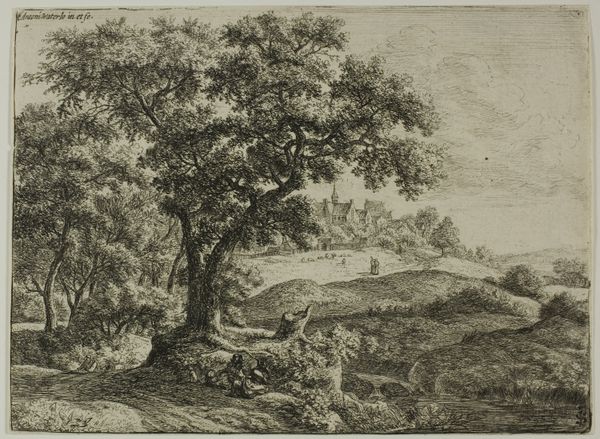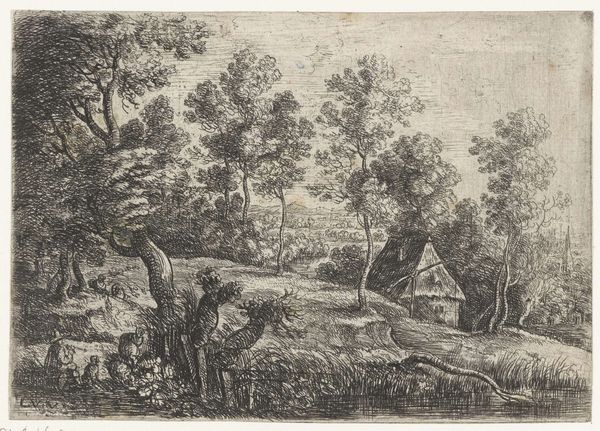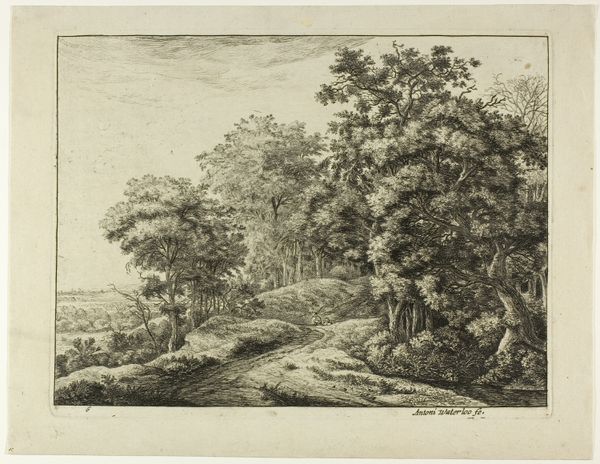
drawing, print, etching
drawing
dutch-golden-age
etching
landscape
etching
Dimensions: height 133 mm, width 144 mm
Copyright: Rijks Museum: Open Domain
Anthonie Waterloo made this print, "Great Oak Next to a Path", using etching, a printmaking technique that was in its heyday in the 17th century. The etching process involves coating a metal plate with a waxy, acid-resistant substance called a ground. The artist then scratches an image into the ground, exposing the metal. When the plate is immersed in acid, the exposed lines are eaten away, creating grooves. Ink is then applied to the plate, filling these grooves, and the surface is wiped clean. Finally, the plate is pressed onto paper, transferring the inked image. The controlled corrosion achieved by this process lends itself beautifully to capturing the gnarled texture of the titular oak, the slope of the landscape, and the figures alongside the road. It also speaks to the relationship between man and nature – here, an easily reproducible image that captures nature in all its glory, and makes it available to the masses. Prints such as these democratized art making and collecting. The relative ease of etching, as compared to engraving, meant that artists could create images more quickly and cheaply, making them accessible to a wider audience. So, when we look at this etching, we are not just seeing a landscape, but also witnessing the unfolding of a new social dynamic, in which art became available to the growing middle class.
Comments
No comments
Be the first to comment and join the conversation on the ultimate creative platform.
